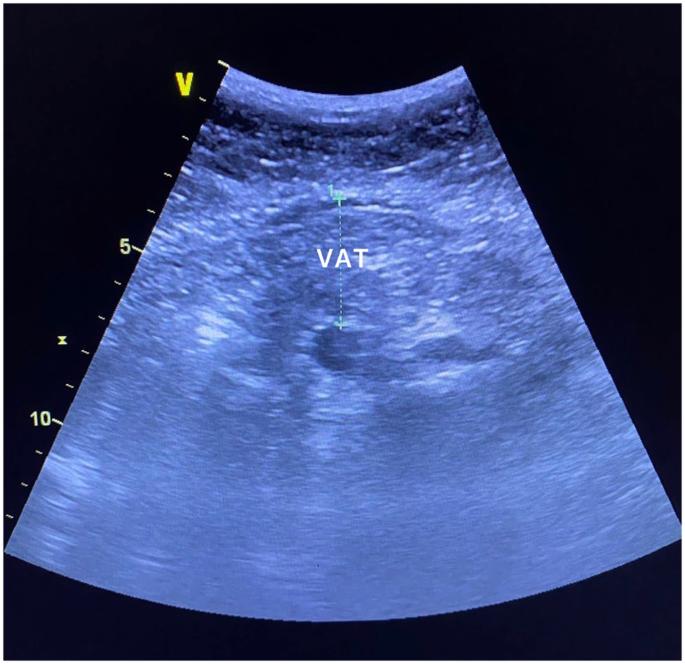Is phase angle associated with visceral adiposity and cardiometabolic risk in cardiology outpatients?
IF 3.3
3区 医学
Q2 NUTRITION & DIETETICS
引用次数: 0
Abstract
Phase angle (PhA) serves as a prognostic marker in various clinical scenarios, reflecting oxidative stress and cellular damage. Despite its clinical relevance, its connection with adiposity and cardiovascular risk markers remains underexplored. Hence, our study sought to investigate the relationship between PhA and metabolic, adiposity, and cardiovascular risk parameters among outpatients with cardiology diagnosis. Adults aged between 26 and 59 years, under the care of a cardiology unit, were included. Ultrasound imaging was used to assess visceral adipose tissue (VAT). Single-frequency bioelectrical impedance analysis (BIA) [50 kHz] was employed to calculate PhA, from BIA’s resistance and reactance measurements. Muscle strength, body mass index, waist circumference, and waist-to-height ratio were also evaluated. Framingham’s risk score was calculated to estimate the cardiovascular risk events. Metabolic blood samples’ results were obtained from medical records. One hundred and five participants were included in our study. Low PhA was observed in 29.5% of our sample. Higher PhA values were independently and inversely associated with both higher VAT and cardiovascular risk (adjusted OR: 0.79 [95% CI 0.69;0.91], OR: 0.74 [95% CI 0.60;0.89], respectively). Lower PhA values (≤5.59) were goodly associated with high VAT (AUC: 0.82 p < 0.001). Lower PhA values (≤5.06) were fairly associated with higher cardiovascular risk (AUC: 0.70 p = 0.003). Our study provides evidence that PhA is independently and inversely associated with elevated VAT and cardiovascular risk. These findings underscore the potential of PhA as a valuable complementary marker in assessing cardiometabolic health.


相位角与心脏病门诊患者的内脏脂肪和心脏代谢风险有关吗?
背景/目的:相位角(Phase angle,PhA)是各种临床情况下的预后指标,反映了氧化应激和细胞损伤。尽管其临床意义重大,但其与脂肪和心血管风险指标之间的关系仍未得到充分探讨。因此,我们的研究试图调查门诊心脏病患者的 PhA 与代谢、脂肪和心血管风险指标之间的关系:研究对象/方法: 研究对象包括在心脏病科接受治疗的 26 至 59 岁的成年人。超声波成像用于评估内脏脂肪组织(VAT)。采用单频生物电阻抗分析(BIA)[50 kHz],根据 BIA 的电阻和电抗测量值计算 PhA。此外,还对肌肉力量、体重指数、腰围和腰围身高比进行了评估。计算弗雷明汉风险评分以估计心血管风险事件。代谢血液样本的结果来自医疗记录:我们的研究共纳入了 105 名参与者。29.5%的样本发现 PhA 值偏低。较高的 PhA 值与较高的 VAT 和心血管风险独立成反比(调整后 OR:0.79 [95% CI 0.69;0.91],OR:0.74 [95% CI 0.60;0.89])。较低的 PhA 值(≤5.59)与高 VAT 有很好的相关性(AUC:0.82 p 结论:我们的研究提供了证据,证明 PhA 与 VAT 升高和心血管风险独立成反比。这些发现强调了 PhA 作为评估心血管代谢健康的重要补充指标的潜力。
本文章由计算机程序翻译,如有差异,请以英文原文为准。
求助全文
约1分钟内获得全文
求助全文
来源期刊
CiteScore
10.60
自引率
2.10%
发文量
189
审稿时长
3-6 weeks
期刊介绍:
The European Journal of Clinical Nutrition (EJCN) is an international, peer-reviewed journal covering all aspects of human and clinical nutrition. The journal welcomes original research, reviews, case reports and brief communications based on clinical, metabolic and epidemiological studies that describe methodologies, mechanisms, associations and benefits of nutritional interventions for clinical disease and health promotion.
Topics of interest include but are not limited to:
Nutrition and Health (including climate and ecological aspects)
Metabolism & Metabolomics
Genomics and personalized strategies in nutrition
Nutrition during the early life cycle
Health issues and nutrition in the elderly
Phenotyping in clinical nutrition
Nutrition in acute and chronic diseases
The double burden of ''malnutrition'': Under-nutrition and Obesity
Prevention of Non Communicable Diseases (NCD)

 求助内容:
求助内容: 应助结果提醒方式:
应助结果提醒方式:


